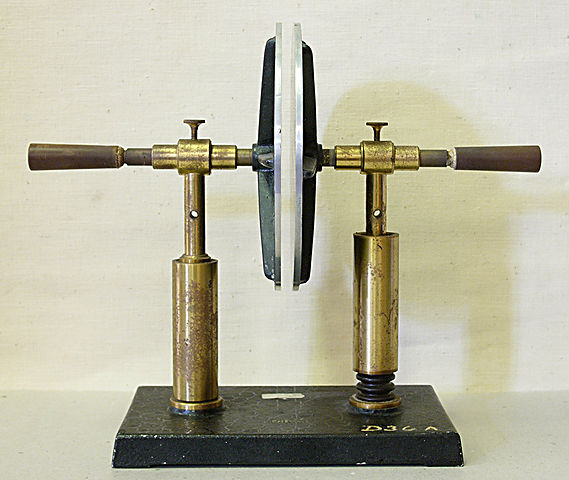Capacitance Calculator
This capacitance calculator is a handy tool when designing a parallel plate capacitor. Such a capacitor consists of two parallel conductive plates separated by a dielectric (electric insulator that can be polarized). Read on if you want to find out what capacitance is and how to calculate it using the capacitance equation.
💡 Are you working with a spherical capacitor instead? Check out the spherical capacitor calculator!
What is capacitance?
It is the ability of an object to store an electric charge. It only depends on the capacitor's geometry and the dielectric material choice between the plates. In most cases, it does not depend on the potential difference or the charge stored on the plates.

Capacitance equation
How to calculate the capacitance, then? You need to use the following formula:
where:
- — Capacitance, measured in farads (symbol: F);
- — Dielectric permittivity (a measure of resistance) in farads per meter;
- — Area where the plates overlap; and
- — Separation distance between the plates.
The permittivity depends on the dielectric material used. By default, this capacitance calculator uses the value of , which is the permittivity of the vacuum. If you wish to change this value, click on the field.
💡 One picofarad (pF) is equal to 10⁻¹² farads.
How to use the parallel plate capacitor calculator
To use this capacitance calculator, follow these steps:
-
Determine what material will be used as the dielectric between two plates. In this example, we will use a vacuum.
-
Once you decide on the material, find out its permittivity — for a vacuum, the value is .
-
Choose the area of the plates. Let's say it's .
-
Measure the distance between the plates — we will assume .
-
Insert all values into the capacitance calculator. It will find the value of capacitance for you! In our example, it is equal to . To learn about other units of capacitance, check out our capacitance conversion tool.
-
You can check the correctness of calculations with the capacitance equation.
What next?
Once you've calculated the capacitance of a single parallel plate capacitor, you can join it with other capacitors in series or parallel. It is fairly easy to calculate the total capacitance of such a system:
- Capacitors in series follow the same rules as parallel resistors; and
- Capacitors in parallel follow the same rules as resistors in series.
And, of course, we've got tools that can do this for you: the capacitors in series calculator and the parallel capacitor calculator.
FAQs
What is capacitance?
The capacitance is the property of an object or device to store electric charge. Capacitance relates the charge to the potential. The capacitance of an object depends uniquely on geometrical characteristics and its position relative to other objects. The higher the capacitance, the larger the charge an object can store.
Using an analogy, you can imagine the inverse of the capacitance acting as the spring constant while the charge acts as the mass. In this analogy, the voltage has the role of force.
How do I calculate the capacitance in a parallel plate capacitor?
To calculate the capacitance in a parallel plate capacitor:
- Assume that the plates have identical sizes, and identify their area
A. - Measure the distance between the plates,
d. - Find the value of the absolute permittivity of the material between the plates
ε. - Use the formula
C = ε · A/dto find the capacitanceC.
What is the capacitance of two plates with A = 1 m² at 1 mm?
Assuming that the plates are in a vacuum, the capacitance of two plates with area A = 1 m² at a distance d = 1 mm is 8.854 nF. To find this result, follow these steps:
-
Convert the distance in meters: 1 mm ≡ 0.001 m.
-
Divide the area by the distance: 1 m²/0.001 m = 1,000 m.
-
Multiply the result of step 2. by the electric permittivity of the vacuum ε0 = 8.854 × 10−12 F/m:
C = 1,000 m · 8.854 × 10-12 = 8.854 × 10-9 F = 8.854 nF.
What is the difference between capacitor and capacitance?
Capacitors are passive electronic components capable of storing and releasing electric charge. Capacitors are similar to batteries but operate thanks to physics rather than chemistry. Capacitors can act as filters on electric signals (as in the RC circuit) to create large pulses of currents and many more applications.
The capacitance is the physical property used by capacitors to store charge. Geometric factors and fabrication details uniquely determine the capacitance of a device. We measure the capacitance in farads.